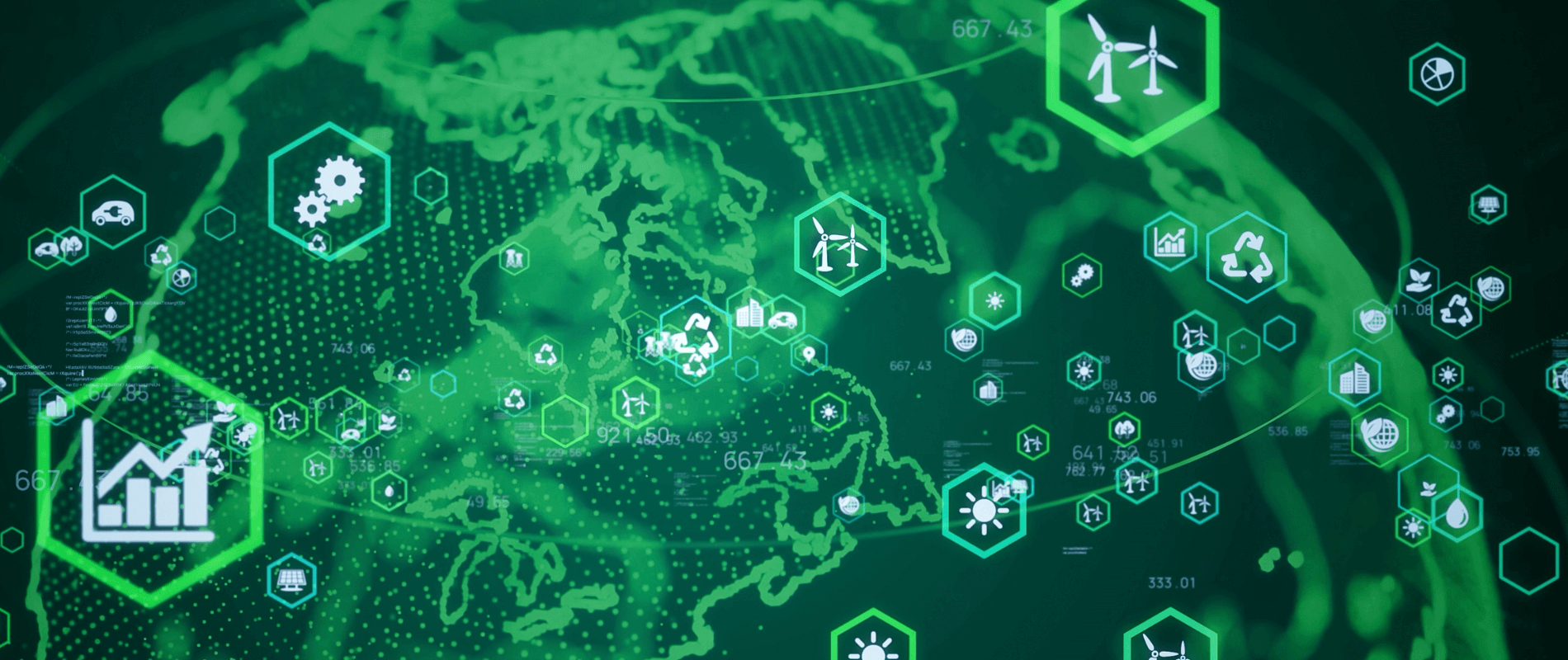
Summary
Measuring your organisation’s digital Scope 3 emissions – those produced from digital products and services in your supply chain – can be challenging, as these are primarily outside of your control.
These include websites, software, Internet usage, digital advertising, and other intangible services with no physical presence.
This article provides a guide to these Scope 3 emissions to help you plan how to identify and measure them.
Table of contents
- Summary
- Defining carbon emissions
- Digital greenhouse gas emissions
- Scope 3 emissions for a web agency designing a website for a new customer.
- Example of an agency collaborating with a local charity to create a more sustainable website
- How to measure and reduce digital Scope 3 emissions
- Use tools to help
- Read more articles
Defining carbon emissions
The Greenhouse Gas (GHG) Protocol
The Greenhouse Gas Protocol is the world’s most commonly used standard for accounting for greenhouse gas emissions.
The GHG Protocol separates greenhouse gas emissions into three scopes:
- Scope 1 emissions are direct emissions from fossil fuel sources that are owned or otherwise controlled by your organisation
- Scope 2 emissions are indirect emissions associated with the electricity your organisation uses
- Scope 3 emissions are emissions that come from both the upstream and downstream ends of your supply chain.

Scope 3 emissions
Scope 3 emissions are the result of activities from assets not owned or controlled by your organisation but that you indirectly affect in your supply chain.
So, measuring your Scope 3 emissions requires you to identify and track all the suppliers, partners, customers, and all parts of your supply chain, including third-party products and services.
The Scope 3 emissions for one organisation are the Scope 1 and Scope 2 emissions of another organisation.
Many organisations find their Scope 3 emissions make up between 80% and 90% of their total greenhouse gas emissions.
Upstream scope 3 emissions
These indirect GHG emissions relate to the creation of products and services often referred to as cradle-to-gate.
- Purchased goods and services
- Capital goods
- Fuel- and energy-related activities (not included in Scope 1 or Scope 2)
- Upstream transportation and distribution
- Waste generated in operations
- Business travel
- Employee commuting
- Upstream leased assets
Downstream scope 3 emissions
These indirect GHG emissions relate to the use of sold products and services are often referred to as gate-to-grave.
- Downstream transportation and distribution
- Processing of sold products
- Use of sold products
- End-of-life treatment of sold products
- Downstream leased assets
- Franchises
- Investments
Digital greenhouse gas emissions
As we discussed in a recent article, just because you can’t physically hold or see a tangible object when browsing a website doesn’t mean that activity has no carbon emissions.
The technology your organisation uses, alongside all the digital products and services within your supply chain, contributes a significant percentage of your organisation’s overall GHG emissions.
This includes, but isn’t limited to your:
- Website
- Hosting
- Internet usage
- Website design agency
- Social media
- Digital advertising (PPC)
- Mobile phones, laptops and desktop computers
- Software and applications, like your CRM, CMS
- Emails and office software, including document storage (yes, emails do have a carbon footprint)
- Use of AI
Understanding Scope 3 emissions for your website and supply chain
Within your Scope 3 emissions, there are two key areas of focus for your digital products and services:
- Upstream – Purchased goods and services
- Downstream – Use of sold products.
Scope 3 emissions for a web agency designing a website for a new customer.
2. Upstream – Purchased goods and services
The web agency will hopefully be designing a sustainable website. To calculate their upstream purchased goods and services, they will need to measure the emissions from designing and developing the website, including:
- Website design and development software
- Project management software
- Digital assets purchased
- Their hosting partner
- Other subcontractors used on the project
10. Downstream – Use of products sold
Once the website is launched, the web agency will need to include the emissions from the website as it is used in their reporting on the use of products sold,
This measurement will need to take into account the volume of web traffic, hosting and advertising. If this is an eCommerce website, the emissions generated by integrations with eCommerce tools and online payment services will need to be taken into account.
Reporting to customers
The web agency will total up all their Scope 1, 2 and 3 GHG emissions to calculate their overall carbon emissions and carbon footprint.
They can then provide a carbon emissions calculation to each of their customers on the total emissions for the website and associated services they provide.
Each customer can include this calculation as part of their Scope 3 Purchased goods and services, related to their website.
Example of an agency collaborating with a local charity to create a more sustainable website
One of Kanoppi’s agency partners, Indigo Tree, is a sustainable web development agency. Indigo Tree prides itself on its sustainable practices, working with partners and suppliers who share the same values.
Indigo Tree was recently able to redesign a client’s website and move it to WordPress. The home page data was reduced from 5MB to 500KB per page view (90% reduction).

They took the time to understand us and our needs, and as a result, we got the best possible outcomes.
Creating a more sustainable website positively impacts both ends of the digital supply chain in this case, and in the future, the carbon emissions from the website as it is used over the next few years will be significantly reduced. This will also benefit the website visitors, as the website is faster to load and quicker to use.
How to measure and reduce digital Scope 3 emissions
Set a strategy and reduction target
Firstly, you should take a baseline measurement of your current digital Scope 3 emissions. After all, you can’t reduce what you can’t measure.
Once you determine your baseline, decide on your short and long-term targets. Be realistic, keeping in mind that most of the Scope 3 emissions in your digital supply chain are out of your control.
You can then put frameworks, processes, and tools in place to track your progress.
Foster a culture of sustainability and raise awareness
For digital Scope 3 emissions, you will need to raise awareness among your partners, suppliers, and customers, working closely with them to align on your sustainability values.
You can do this by highlighting the advantages they can gain from reducing digital emissions and adopting more sustainable practices. Then, give them a deadline for starting to provide carbon emissions reports on their digital products and services.
This can have a positive ripple effect throughout your supply chain, reducing your Scope 3 emissions, especially if you can convince your suppliers to work with more sustainable partners.
Work with organisations that are committed to sustainability
Choosing to work with partners and suppliers who actively strive for sustainability is the easiest way to reduce Scope 3 emissions in your digital supply chain.
You can also support public policies that aim to make reporting on Scope 3 emissions mandatory. This will help influence organisations that are less concerned with sustainability to begin reducing their carbon footprint.
Use tools to help
Tools like Kanoppi can help with this measurement. Kanoppi analyses each of your pages’ visitors daily, as well as visitor traffic, visitor location, devices, and other factors that influence your site’s carbon footprint. It then provides straightforward, actionable guidance to make simple changes that have a significant impact on a more sustainable website.
Start to measure your website’s carbon footprint today
Kanoppi provides intelligent carbon footprint insights for WordPress websites, helping measure and reduce your emissions while improving website performance.
Reducing GHG emissions is a joint effort
If you’d like to learn more about any of the points covered in this article, please don’t hesitate to get in touch. We’re always happy to answer questions and chat more about sustainability.
Stay in the know
Sign up for our mailing list – we’ll share industry insights, product updates and company news.
"*" indicates required fields


